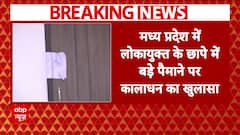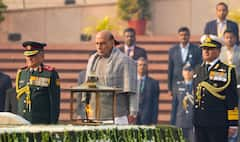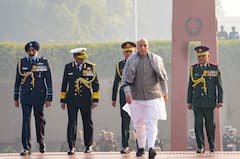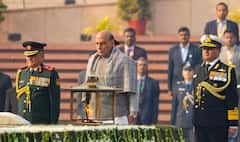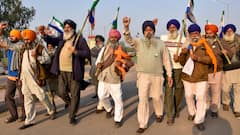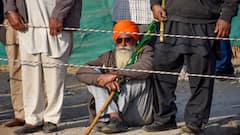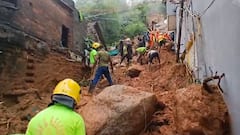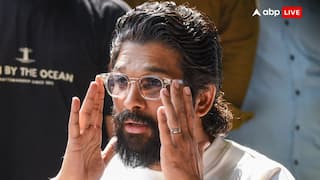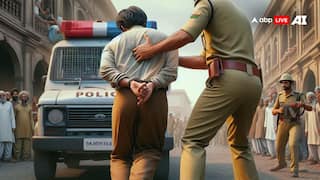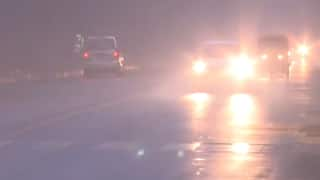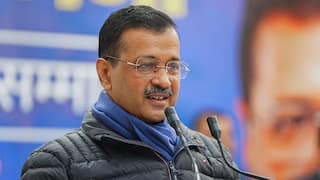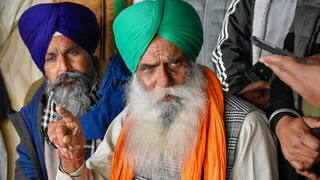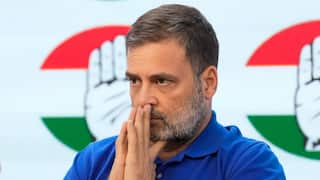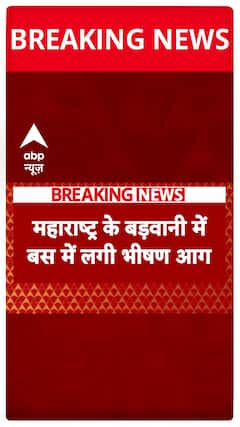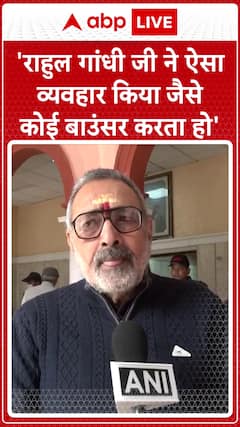Odisha Train Accident: 'Over 100 Patients Need Critical Care,' Mandaviya Holds Discussion At AIIMS Bhubaneshwar
Mandaviya, who visited AIIMS Bhubaneswar to take stock of medical assistance being provided to the injured victims, said that he had a detailed discussion and a working plan has also been prepared.

Union Health Minister Mansukh Mandaviya visited AIIMS Bhubaneswar and Medical College in Cuttack to take stock of medical assistance being provided to the injured victims of the train crash in Odisha's Balasore district. During his visit, Mandaviya said that he had a detailed discussion about the accident and a working plan has also been prepared.
He also said that more than 1,000 people are injured in this terrible accident and their treatment is underway. Over 100 patients need critical care and for their treatment, expert doctors from Delhi AIIMS, Lady Hardinge Hospital, and RML Hospital along with modern equipment and medicines have reached here.
"More than 1,000 people are injured in this terrible accident and their treatment is underway. Over 100 patients need critical care and for their treatment, expert doctors from Delhi AIIMS, Lady Hardinge Hospital, and RML Hospital along with modern equipment and medicines have reached here. We had a detailed discussion and a working plan has also been prepared," Mansukh Mandaviya said as quoted by ANI.
A team of medical experts from AIIMS Delhi will also visit Odisha's train accident site along with medical equipment to provide treatment to more than 1,000 injured and 100 critical patients, news agency ANI reported citing sources. The train crash left at least 275 people dead and over 1,100 injured.
The crash involving Bengaluru-Howrah Superfast Express and Shalimar-Chennai Central Coromandel Express, which were carrying around 2,500 passengers, and a goods train occurred around 7 PM on Friday near the Bahanaga Bazar station in Balasore, about 250 km south of Kolkata and 170 km north of Bhubaneswar. The Bengaluru-Howrah Superfast Express which was coming at high speed rammed into the coaches of Coromandel Express that had scattered on the adjacent track.
Twenty-one coaches were derailed and severely damaged in the accident, trapping hundreds of passengers. Both passenger trains were at a high speed and it has been cited by experts as one of the main reasons for the high number of casualties, as reported by PTI. Large cranes were deployed to move the wreckage and gas cutters were used to extricate the bodies from the mangled, toppled coaches.
The rescue operation was wrapped up Saturday afternoon and restoration work started. With traffic on the route disrupted, over 150 trains were cancelled, diverted, or short-terminated.
Preliminary investigations into the train crash have revealed that a signal was given to Coromandel Express to enter the main line but it was taken off and the train entered the loop line and crashed into a goods train parked there, as reported by the news agency PTI.
Earlier on Saturday, Investigators were looking into any human error, signal failure, and other possible causes behind the three-train crash as officials submitted a preliminary inquiry report into the worst rail accident in India in nearly three decades.
Trending News
Top Headlines













